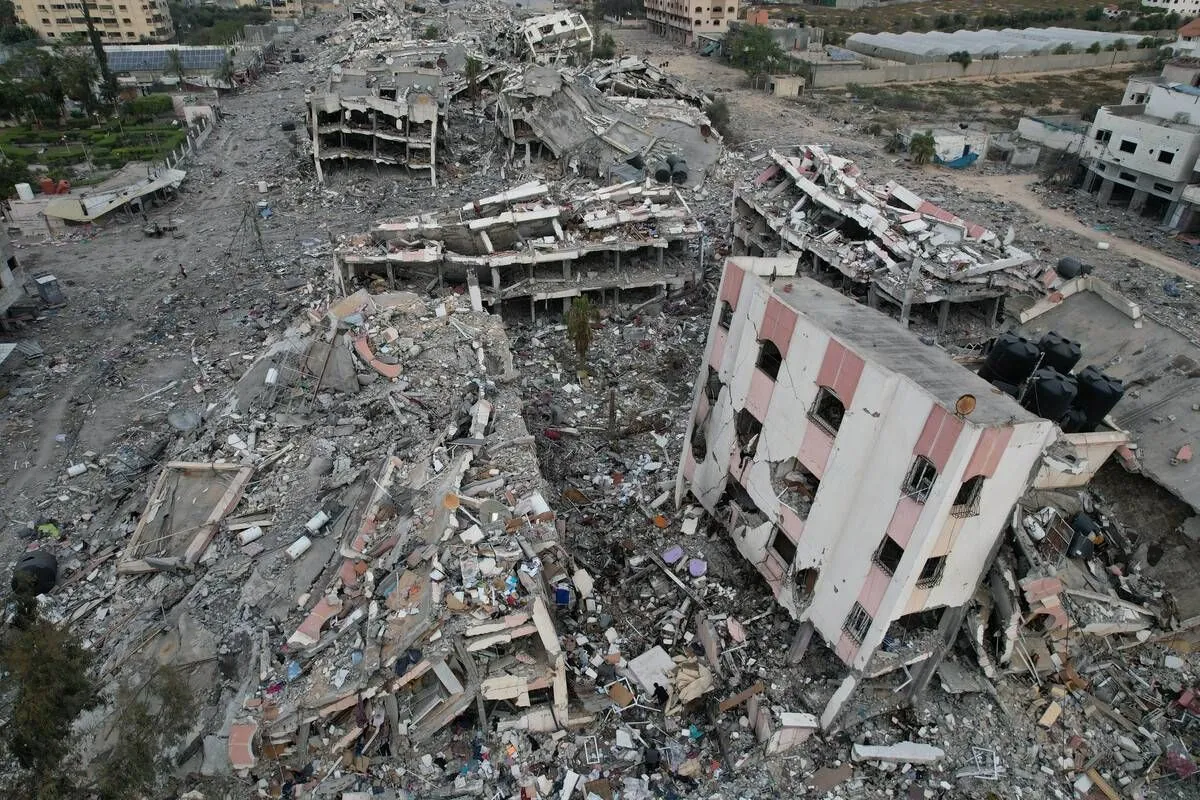The Gaza Strip, a year after the outbreak of conflict between Israel and Hamas, presents a scene of unprecedented devastation. The territory, spanning just 365 square kilometers, has endured destruction on a scale comparable to major war zones, leaving its dense population of over 5,000 people per square kilometer in dire straits.
Hamas's attack on Israel on October 7, 2023, triggered a response that has reshaped Gaza's landscape. According to local health officials, the conflict has claimed over 41,000 lives, with women and children accounting for more than half of the casualties. The scale of destruction is staggering, with approximately a quarter of all structures in Gaza either destroyed or severely damaged, based on a UN assessment from September 2023.
The devastation in Gaza rivals that seen in front-line towns in Ukraine. Researchers Corey Scher and Jamon Van Den Hoek note that the damage in central and southern Gaza alone is comparable to the destruction in Bakhmut, one of the most heavily contested areas in the Ukraine conflict. This comparison is particularly striking given Gaza's small size – less than half that of Kyiv, Ukraine's capital.
The conflict has led to a humanitarian crisis of immense proportions. An estimated 90% of Gaza's 2.3 million residents have been displaced, many multiple times. Hundreds of thousands are now living in makeshift tent camps, lacking basic necessities such as electricity, running water, and sanitation facilities. The situation is exacerbated by Gaza's unique demographics, with one of the world's youngest populations and a median age of just 18.
Critical infrastructure has been severely impacted. Nearly 70% of Gaza's water and sanitation facilities have been damaged or destroyed, including all five wastewater treatment plants. The territory's sole power plant, built in 2002, has been non-operational since the early days of the conflict. The destruction of sewage networks has led to streets flooded with contaminated water, accelerating the spread of diseases.
The economic impact is equally severe. The World Bank estimated $18.5 billion in damage by the end of January 2024, nearly equivalent to the combined economic output of the West Bank and Gaza in 2022. Unemployment, which was already high at around 50% before the conflict, has soared to approximately 80%.
Rebuilding Gaza faces numerous challenges. The UN estimates that clearing the 40 million tons of debris could take up to 15 years and cost nearly $650 million. The territory's limited land area complicates debris disposal, requiring about five square kilometers of space. Political obstacles further complicate reconstruction efforts, with regional powers linking their support to a postwar settlement that includes a path to Palestinian statehood.
The personal story of Shifaa Hejjo, a 60-year-old housewife, illustrates the human impact of the conflict. Returning to her neighborhood in Khan Younis after months of displacement, she found it unrecognizable. "I couldn't tell where people's homes were," she recounted, now living in a tent fortified with salvaged materials from her destroyed home.
As Gaza enters its second year since the conflict's outbreak, the future remains uncertain. The territory, which has been under various forms of occupation since 1948 and an Israeli-Egyptian blockade since 2007, faces unprecedented challenges in rebuilding its infrastructure, economy, and society. With no clear political resolution in sight, the prospect of reconstruction and recovery for Gaza's population remains distant.
"This war is destruction and misery. It would make the stones cry out. Whoever sees Gaza ... It will make them cry."
The international community continues to grapple with the complexities of providing aid and support to Gaza. Organizations like UNRWA, which has long been a lifeline for Palestinian refugees in the region, face increased pressure as they attempt to address the overwhelming humanitarian needs. The path forward for Gaza remains fraught with challenges, both immediate and long-term, as its people struggle to rebuild their lives amidst the rubble of conflict.
